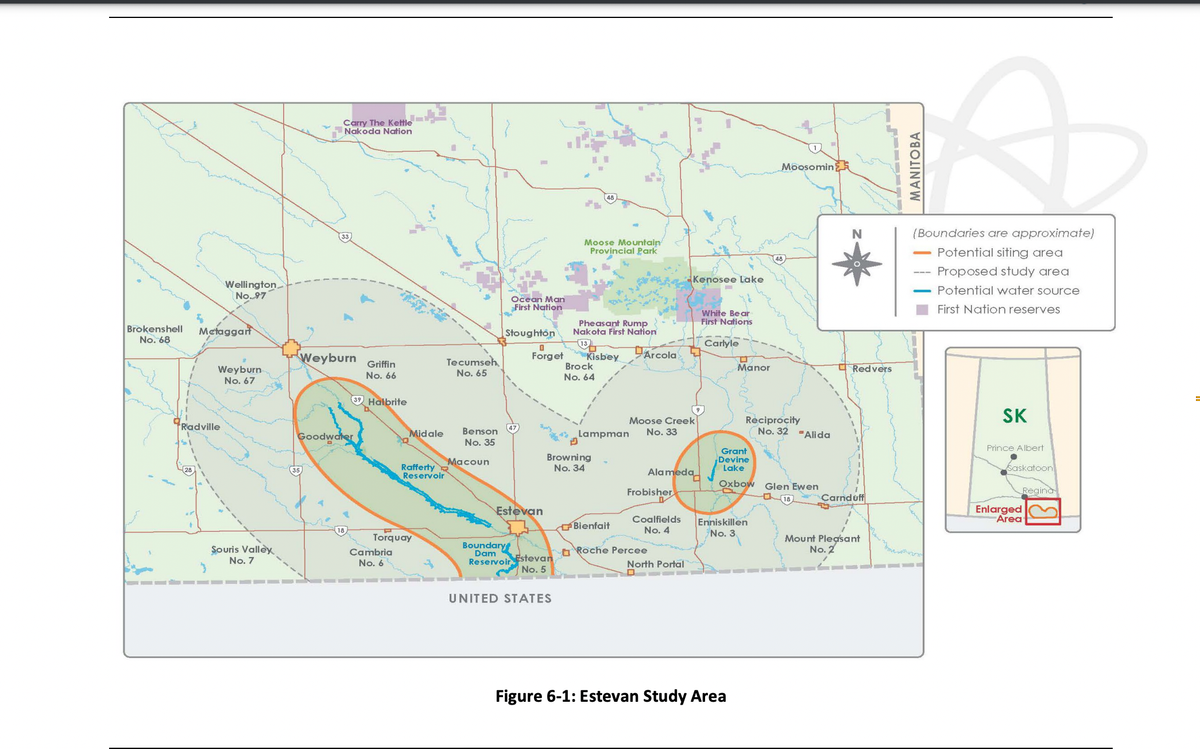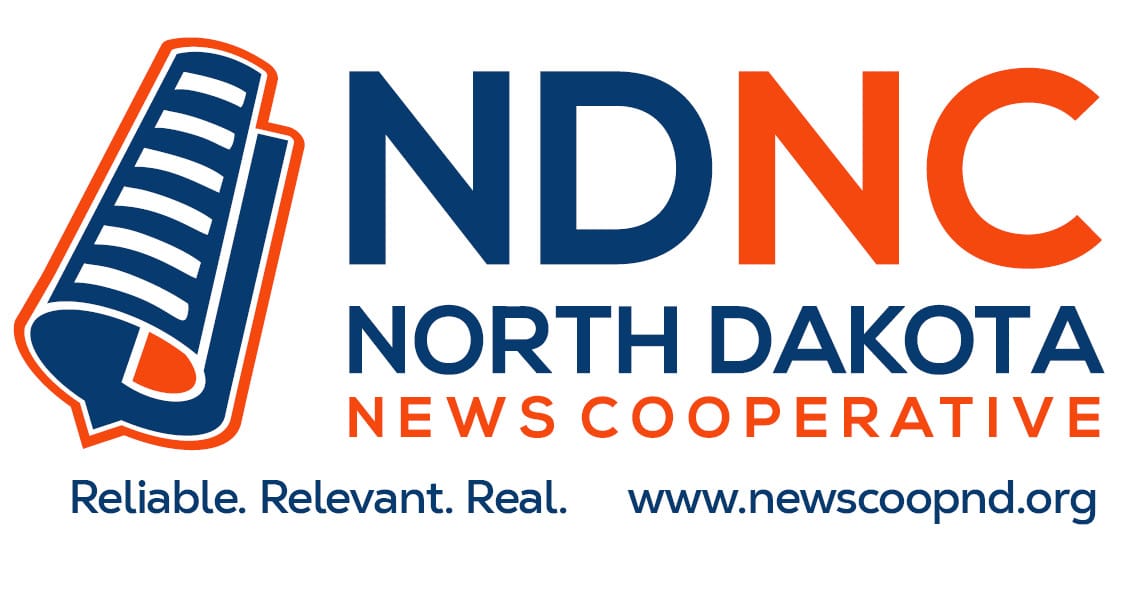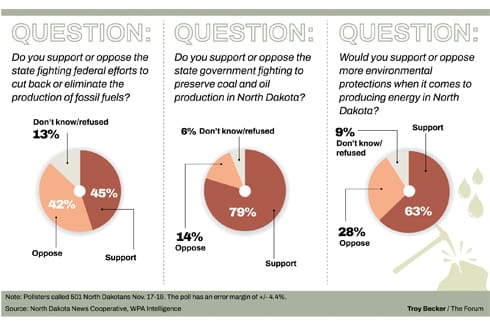Canadian nuclear project could locate near ND border
Adds impetus for state to contemplate nuclear power potential

The prospect of Canadian utility company siting a small nuclear reactor just a stone’s throw from the North Dakota border has come as a surprise to state officials and local landowners.
But the power such a project could bring may be welcome.
“It’s a very positive development,” said Jody Gunlock of the possibility that SaskPower will build a nuclear power plant across the border from Noonan, ND, located in Divide County in the state’s far northwest corner.
Gunlock, who ranches near the border and also serves as Divide County’s emergency manager, is eager to hear more, not just about SaskPower’s plans, but about the possibility of North Dakota planning its own small modular nuclear reactors.
Sheri Haugen-Hoffart, one of three commissioners serving on the North Dakota Public Service Commission (PSC), said NDNC’s query was the first she’d heard of the project. Gov. Doug Burgum’s office indicated that the Department of Commerce had communications with SaskPower and others regarding small modular reactors (SMRs) at a recent energy conference in Atlanta.
“According to Commerce, much of the discussion about nuclear power at the conference revolved around the fact that either the U.S. or Canada will need at least 10 years from initial study to finalized buildout, even for SMRs,” said Burgum spokesperson Mike Nowatzki, adding that the state is unaware of any SMR planning for North Dakota.
Victor Schock, director of public utilities at the PSC, said he was prompted to research the project after the inquiry for this story and said SaskPower hadn’t reached out to state authorities about the plans.
“Not that they would necessarily need to since they’re really outside our jurisdiction, but that wouldn’t necessarily prevent us from intervening in a proceeding they may have up there either,” Schock said. “If we’re concerned about safety on our side of the border, it would be potentially worthwhile to intervene and raise some concerns.”
SaskPower is narrowing down potential sites for the location of a GE-Hitachi BWRX-300 small modular reactor, with one possible location in the Estevan region and the other near Elbow, which is about an hour northwest of Regina.
Site selection should be finalized by the end of 2024, with licensing finished by 2029, said Darcy Holderness of SaskPower, in an online presentation earlier this month.
An operating reactor wouldn’t be in place until the mid-2030s, he said, and the site picked could possibly host at least an additional reactor after the initial project is approved.
Eagerness for reliable power
Gunlock spent time at the Defense Nuclear Weapons School in New Mexico and led the 55th Civil Support (WMD) response team at the Minneapolis-St. Paul International Airport during his time in the U.S. Army, so he is familiar with both the potential opportunities and dangers of nuclear material.
“If you want clean, carbon-free energy and want reliable energy that’s there all the time, you’ve got to go nuke,” he said, adding that the intermittency of wind and solar reduce reliability, plus they take up much more space than a small nuclear reactor.
“If it was up to me and they came and asked if they could put a nuke on my property, I’d say yes, build that,” Gunlock said.
Isaac Jacobs, county commissioner in Divide, and his brother, Morgan, own a farm right next door to the Noonan Port of Entry. Isaac had already heard of the project from Canadian radio broadcasts, and shared thoughts similar to Gunlock’s. He calls nuclear the cleanest, most efficient and most readily available source of energy.
“It’s been around for a long time,” he said. “So why aren’t we using it?”
Morgan had a slightly different take, saying he “wouldn’t be opposed to nuclear if it benefited the local community in some way” but that if “all we could get is the risk of something going wrong, I’d be opposed to such a project.”
Based on transmission infrastructure already under discussion, one future benefit for North Dakota could be power delivered from Canada. Plans for two 230 kV transmission lines extending from Wheelock and the Tande-Neset areas into Canada are in the works, with public engagement sessions scheduled for June 5 in Crosby and June 6 in Tioga.
Basin Electric Power Cooperative will be the transmission owner of the lines, Basin spokesperson Andrew Buntrock said. The project is part of nearly $700 million in line improvements planned for the state, with this one slated to “improve power transferability” between the two countries.
SaskPower has not discussed its nuclear power plans with the cooperative and the transmission development has no relation to that project, Basin Electric's communications manager Lindsey Chumley told The Tioga Tribune.
“We’ve identified that the proximity to the US border will require some consideration, though to date, we have not had any direct communications with representatives in North Dakota or in other American jurisdictions regarding our SMR development project,” said Scott McGregor, a media relations representative of SaskPower.
McGregor said that the planned transmission line could enable the potential export of power generated from an SMR, but the scope of import and export arrangements has not been finalized yet.
A nuclear powered future?
Plans for small modular nuclear power projects aren’t just in the works north of the border.
In January, the U.S. Nuclear Regulatory Commission certified designs on the first small modular nuclear reactor in the U.S. -- a 50 MW unit built by Oregon-based NuScale Power to be located near Idaho Falls, Idaho.
Another project in the works is the Bill Gates-backed TerraPower small modular reactor that will replace the Naughton coal plant near Kemmerer, Wyoming, an effort that has been funded with nearly $2 billion by Congress.
Other small modular reactors in the pipeline include potential sites in Ohio, Texas and Washington state. In North Dakota, no such plans exist, but recently passed House Resolution 3034 directed the legislature to consider studying the feasibility of advanced nuclear energy development and transmission in the state.
The study was passed on May 25 by the 17-member Legislative Management body and will be on the agenda of members of an Energy Development and Transmission Committee in the next two years.
“This study is a vital first step to future-proof our energy industry,” said district 18 Rep. Corey Mock (D-Grand Forks), who sponsored the study bill.
Mock said it important to consider nuclear power as coal-fired power plants age and reach the end of their life cycle, especially considering the average age of facilities in the state is over 45 years old.
“Advanced nuclear power may be the critical piece that makes North Dakota a perpetual leader in American energy production,” Mock said, and that if it eventually replaces some coal fired power, could “breathe new life into coal country.”
Xcel Energy, which testified in support of the bill and already has two nuclear power plants in Minnesota, is also working with NuScale to support its Idaho development and sees potential for advanced nuclear in North Dakota and across the region, senior media relations manager Kevin Coss said.
Schock said small modular reactor discussions have come up over the years at the PSC, but concerns have been raised. North Dakota would want to have a cost-effective, developed technology ready to deploy instead of trying out something new, he said. Another aspect is long term storage of spent nuclear fuel, which has been a costly regulatory problem for other nuclear power providers.
That said, nuclear will likely need to be on the table in the coming years.
“There’s really no future reliable energy that can happen without that piece of the puzzle,” Schock said, mentioning that renewable energy resources, natural gas and battery storage can’t fully ensure grid reliability. “Nuclear is a good way to get over that hump, as long as you can become okay with the risks associated with it.”
Alan Ahn, a climate and energy fellow specializing in nuclear power at the center-left think tank Third Way, said interest has been increasing in nuclear energy around the country, particularly in coal-to-nuclear transitions.
For areas that could see coal-fired power shut down in the future, small modular nuclear reactors could be a way to transition to another energy source that can use existing infrastructure from cooling water to transmission lines to the plants themselves.
“The primary interest that we’re hearing from other states like West Virginia, for example, is that a lot of the skills in an existing coal workforce are translatable or could be converted to that of an advanced reactor plant with modest or minimal retraining,” Ahn said.
“Obviously it’s a huge benefit for the clean energy transition for reducing greenhouse gas emissions, but then you can also preserve the socio-economic fabric of a community,” Ahn said. “If you were to replace the generation from a coal plant with the equivalent amount of wind turbines and solar, there wouldn’t necessarily be the same jobs in that geographic location.”
The North Dakota News Cooperative is a nonprofit news organization providing reliable and independent reporting on issues and events that impact the lives of North Dakotans. The organization increases the public’s access to quality journalism and advances news literacy across the state. For more information about NDNC or to make a charitable contribution, please visit newscoopnd.org. Send comments, suggestions or tips to michael@newscoopnd.org. Follow us on Twitter: https://twitter.com/NDNewsCoop.



